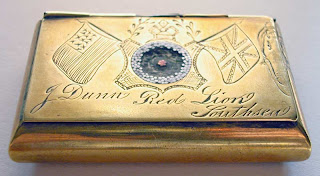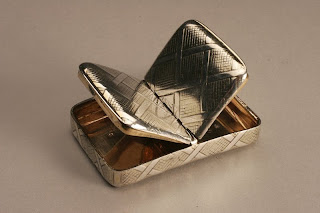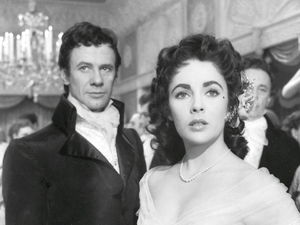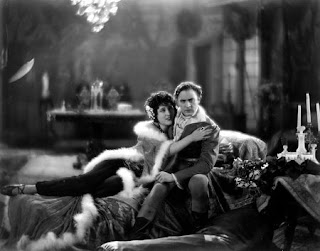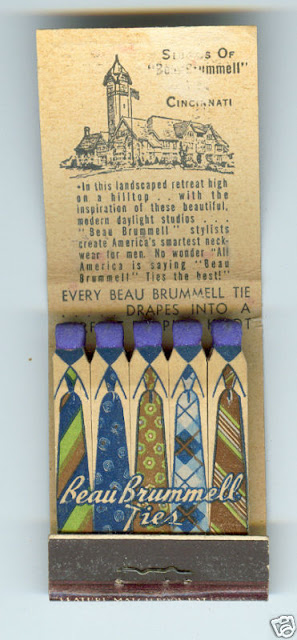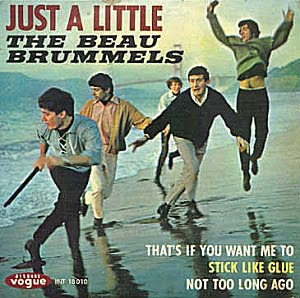Category: Beau Brummell
ANOTHER LOOK AT LORD ALVANLEY
We first introduced you to Lord Alvanley in a previous post on this blog, but as his Lordship has recently been mentioned in Waterloo posts about Countess Brownlow and Katherine Arden, his sister, we thought it was time that we encountered him once again.
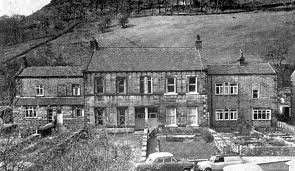 |
| Underbank Hall |
It was to Alvanley that Brummell turned whilst in exile in France for help and for many years Alvanley regularly sent the Beau financial support. However, because of his spending habits, his family estates had to be sold to pay debts. Underbank Hall in Stockport was sold by auction in 1823, most of the Bredbury estate was sold in lots in 1825, the Arden Hall mansion in 1833. He was forced to dispose of his half-pay on 10 June 1826. He later served in the Forest Troop, King’s Regiment of Cheshire Yeomanry Cavalry, as a cornet, but resigned on 17 January 1840. He did not marry and had no children. On his death, the title went to his only brother, the Hon. Colonel Richard Arden.
From The Letter-bag of Lady Elizabeth Spencer-Stanhope
“But a yet more celebrated leader of fashion mentioned by Mrs Stanhope as being present at the ball given by the Duchess of Bolton was Lord Alvanley. One of the accepted dandies in the same category as Lord Petersham, the Duke of Argyle, Lords Foley and Worcester, Beau Brummell and his great friend, Henry Pierrepont. Lord Alvanley had served with distinction in the army, and further enjoyed the reputation of being one of the wittiest men in Europe. Short and somewhat stout, with a small nose and florid cheeks usually adorned with a lavish sprinkling of snuff, like his rival Lord Petersham, he cultivated a lisp which accentuated the humour of his utterances. He also adopted much the same method of enhancing his value by indulging in certain peculiarities which, however inconvenient to his fellows, appear to have been accepted by them with surprising amiability. For instance, being fond of reading in bed, when he at length felt sleep overpowering him, he would extinguish his candle by the novel method of popping it alight under his bolster, or flinging it into the middle of the room and taking a shot at it with his pillow—but if the shot was unsuccessful, with a heavy sigh he left it to take its chance. So well known, indeed, was this little habit of Lord Alvanley, that hostesses who were anxious not to have their houses set on fire at midnight would depute a servant to watch in a neighbouring apartment till his lordship composed himself to sleep, a precaution which was invariably adopted by Mrs Stanhope when he paid his annual visit to Cannon Hall.
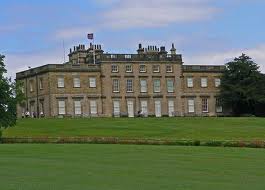 |
| Cannon Hall |
“However, despite such minor failings, Lord Alvanley enjoyed a popularity seldom surpassed. To his other recommendations was added that of being a celebrated gourmet, and the excellence was proverbial of the little dinners which he gave in his house in Park Street, St James’s, to which never more than eight friends were bidden, and at which there was an apricot tart on the sideboard all the year round. Moreover, although like Brummell and Sheridan, many a bon mot was fathered upon him to which he had never given utterance, yet his reputation as a wit was well deserved, and at a date when both the dandies and the fine ladies prided themselves upon their undisguised insolence, Lord Alvanley remained a shining example of good-nature, so that, save, perhaps, in one instance recorded in this book, his wit never offended.”
Originally published in 2011
ALL THE RIGHT SNUFF
Many snuff-takers, following the example of Frederick the Great of Prussia, made it a hobby to collect snuff-boxes, Beau Brummell having had a very curious and extensive assortment. On one occasion, when dining at Portman Square, on the removal of the cloth, the snuff-boxes made their appearance, and Brummell’s was particularly admired. It was handed round for inspection, and a gentleman, finding it rather difficult to open, incautiously applied a dessert knife to the lid. Poor Brummell was on thorns. At last he could not contain himself any longer, and, addressing the host, said, with his characteristic quaintness — “Will you be good enough to tell your friend that my snuff-box is not an oyster?”
 |
| Tortoise shell and silver snuff box, courtesy of Ernest Johnson Antiques |
Beau Brummell also prided himself on his graceful manner of opening the snuff-box with one hand only—the left. Judging from a satirical advertisement which appeared in the Spectator, it would seem that much attention was paid to this act, which afforded an opportunity of displaying the jewelled finger. So important was the act of opening a snuff box that classes were offered:
“The exercise of the snuffbox, according to the most fashionable airs and motions in opposition to the exercise of the fan, will be taught with the best plain or perfumed snuff, at Charles Lillie’s, perfumer, at the corner of Beaufort Buildings, in the Strand, and attendance given for the benefit of the young merchants about the Exchange for two hours every day, at noon, except Saturdays, at a toy-shop, near Garraway’s Coffee House. There will be likewise taught the ceremony of the snuff-box, or rules for offering snuff to a stranger, a friend, or a mistress, according to the degrees of familiarity or distance, with an explanation of the careless, the scornful, the politic, and the surly pinch, and the gestures proper to each of them.”
Another great collector of snuff-boxes was Edward Wortley Montagu, the eccentric son of Lady Mary, who is said to have possessed more boxes than “would suffice a Chinese idol with a hundred noses,” a collection which perhaps was never equalled unless by that of George IV, who was not less extravagant and recherche in snuff and snuff-boxes than in other things.
Then there was Lord Petersham, who boasted a stock of snuffs worth three thousand pounds, while he had boxes adapted for all occasions— boxes for winter wear, boxes for summer use. Indeed, the story goes that he had a different box for every day in the year, and Captain Gronow saw him one day use a beautiful Sevres box, which on being admired, he said, “was a nice summer box, but would not do for winter wear.” He was a great connoisseur of snuffs, and “Lord Petersham’s Mixture” has long been proverbial as a popular snuff. He actually devoted one room of his mansion in Whitehall Gardens to properly storing his snuff. That room was a curiosity in its way, with its rows of well-made jars, and proper materials of all kinds for the due admixture, and management, of the snuffs they contained, under the able superintendence of a well-informed man, who was the guardian angel thereof. After the earl’s death the collection was sold, and prices that seem fabulous to the uninitiated were realized for the finer sorts.
Lord Stanhope used to calculate that a regular snuff-taker took one pinch every ten minutes, each pinch, and its accompanying ceremonies, occupying a minute and a half. One minute and a half out of every ten, it has been pointed out, if sixteen hours be allowed to the day, gives two hours and twenty-four minutes per day, or thirty-six and a half days in the year as the time wasted by a snuff-taker upon his nose.
On the other hand, Talleyrand defended snufftaking, not as a habit, but on principle. He maintained that all diplomatists ought to take snuff, as it afforded them an opportunity of delaying a reply which they might not have ready at hand. It further sanctioned, he said, the removal of one’s eyes from those of the interrogator, and occupied the hands, which otherwise might betray a nervous fidget calculated to expose, rather than conceal, his feelings.
Dryden was a snuff-taker, and was in the habit of frequenting Willis’ Coffee House, in Bow Street, Covent Garden, which consequently became one of the leading resorts of the wits of his time. Thus Ned Ward relates in his ” London Spy ” how “a parcel of raw, second-rate beaux and wits were conceited if they had but the honour to dip a finger into Mr. Dryden’s snuff-box.”
The eleventh Earl of Buchan—brother of Thomas Erskine, who by the force of his eloquence rose to be Lord Chancellor of England—was remarkable for his penuriousness, and eccentricity. In the year 1782 the Goldsmiths of Edinburgh presented him with a mounted snuff-box, made from the tree to which William Wallace had once been indebted for his safety. Ten years afterwards, however, Lord Buchan obtained permission from the Goldsmiths to give the snuff-box to Washington, at that time President of the United States. As a reason for so doing he maintained that Washington was the only man in the world to whom he thought the snuff-box justly due.
When a Mrs. Sterne was about to join her husband in Paris, in the year 1762, he wrote:— “You will find good tea upon the road from York to Dover. Only bring a little to carry you from Calais to Paris. Give the Custom-house Officer what I told you. At Calais give more, if you have much Scotch snuff; but, as tobacco is good here, you had best bring a Scotch mull, and make it yourself—that is, order your valet to manufacture it, ’twill keep him out of mischief;” and in another letter he adds, “You must be cautious about Scotch snuff; take half-a-pound in your pocket, and make Lyd do the same.”
When manager of Drury Lane Theatre, Garrick brought into fashion a particular snuff mixture. It appears that a man named Hardham had been his numberer—to count the audience in the theatre—and on inventing his
“mixture,” Garrick rendered him the following service. Whilst enacting the character of a man of fashion on the stage, Garrick offered a pinch of his snuff to a fellow comedian, observing that it was the most fashionable mixture of the day, and to be had only at Hardham’s, 37, Fleet Street. As may be imagined, the puff answered beyond Garrick’s expectation, and for many years afterwards Hardham’s was the favourite mixture, when snuff-taking was the rage and fashion of the time. It may be added that Hardham, having made a large fortune by his snuff trade in Fleet Street, retired to Chichester, where he died in the year 1772, bequeathing a portion of his well-earned wealth to charitable institutions of that city, which, by-the-bye, was his native place.

Sir Joshua Reynolds took snuff so freely when he was painting that it occasionally inconvenienced his sitters. The story goes that when he was painting the large picture at Blenheim of the Marlborough family, the Duchess one day ordered the servant to bring a broom and sweep up Sir Joshua’s snuff from the carpet; but Reynolds, who would not permit any interruption while engaged in his studio, ordered him to let the snuff remain until the completion of his picture, observing that the dust, raised by the broom, would do more injury to his picture than the snuff could possibly do to the carpet.
According to another story, a gentleman told Wilkie he’d sat to Sir Joshua, “who dabbled in a quantity of snuff, laid the picture on its back, shook it about till it settled like a batter-pudding, and then painted away.”
HAPPY BIRTHDAY, MR. BRUMMELL
Born on 7 June, 1778, Beau Brummell endures as a style icon, a matchless wit and an enigma. Was Brummell a caring friend, as experienced by Frederica, Duchess of York, or a sarcastic louse, as portrayed in the following passage from The Cornhill Magazine –
Perhaps in the end Brummell was just like the rest of us – a complex person who could be, and was, many things to many people. Certainly, the Duchess of York and her brother-in-law, the Prince of Wales, had different views on him. However, one view that seems to be universal is that Brummell was the quintessential dandy – or was he? William Pitt Lennox declared that it was a libel to call Brummell a “Dandy,” since he differed entirely from all that species. “Of all my acquaintances, he was the quietest, plainest, and most unpretending dresser,” Pitt wrote. “Those who remember him in his palmy days will bear testimony to the truth of this assertion; it was the total absence of all peculiarity, and a rigid adherence to the strictest rules of propriety in costume, which gained for him the homage due to his undisputed taste. He eschewed colours, trinkets, and gew-gaws; his clothes were exquisitely made, and, above all, adapted to his person; he put them on well too, but for all this there was no striving for effect—there was an unusual absence of study in his appearance.”
A favorite parlor game played by myself, Victoria Hinshaw and Jo Manning is not Scrabble, Trivial Pursuit or even the Oijua Board. No, our favorite game, especially when we are with new people whose opinions we haven’t heard before, always begins with the same question, “Beau Brummell: Straight, gay, bisexual or A-sexual?” I promise you, coupled with a few glasses of port, a cozy chair and the right people, this question can keep you entertained for hours. Granted, you have to have a group of people with the same mind set, people who have actually heard of Beau Brummell and who know the facts surrounding him, but this is not as difficult as it might seem. Two centuries after his death Brummell is still being written about, as both fact and fiction, not to mention the many films which have portrayed his fascinating, fashionable and foible filled life.
James Purefoy, the Brummell flair always manages to come through.
In fact, the Brummell flair is still so powerful, his name still so instantly associated with all things exquisite and fashionable that Brummell, who would be 232 years old today, continues to have his name bandied about in order to sell all manner of goods, including after shave, ties, shirts, suits, watches, razors, early 20th century hand soap dispensers and a Cincinnati office building.
Not to mention a show poodle, which, when you think of it, is infinitely more fitting than a soap dispenser. By the way, there have also been many horses named Beau Brummell – one of them has a race video on YouTube.
No . . . I’m not kidding.
BRUMMELL FLEES TO FRANCE!
On 16-18 May 1816 Beau Brummell fled to France to escape debtor’s prison. Brummell was born on George Bryan Brummell (7 June 1778 to March 1840 aged 61)) at 10 Downing Street on 7th June 1778, the youngest son of William Brummell, an enterprising man who had risen to the position of Private Secretary to the Prime Minister. From such auspicious beginnings, Brummell utlimately fled London, and his position as the Leader of Fashion, in order to escape his debts.
When Brummell left London, he was living at No. 13 Chapel Street, Park Lane, to which house he had removed from Chesterfield Street some time before; it belonged to Mr. Hart, the Duke of Gloucester’s steward. Leaving behind most of his belongings, they were auctioned off in order to satisfy his creditors.
The notice for the Brummell auction which ran in the newspaper can be found in The Life of George Brummell, Esq., by William Jesse:
By order of the Sheriff of Middlesex! Will be Sold by Auction By Mr. Christie, On the Premises, No. 13 Chapel Street, Park Lane, On Wednesday, May 22nd, and following Day.
The competition for the knick-knacks and articles of virtu was very great; amongst them was a very handsome snuff-box, which, on being opened by the auctioneer before it was put up, was found to contain a piece of paper with the following sentence, in Brummell’s handwriting, upon it:— “This snuff-box was intended for the Prince Regent, if he had conducted himself with more propriety towards me.” The proceeds of the sale amounted to about eleven hundred pounds, and the sum was paid to the Sheriff of Middlesex.
Originally published in 2010.




















